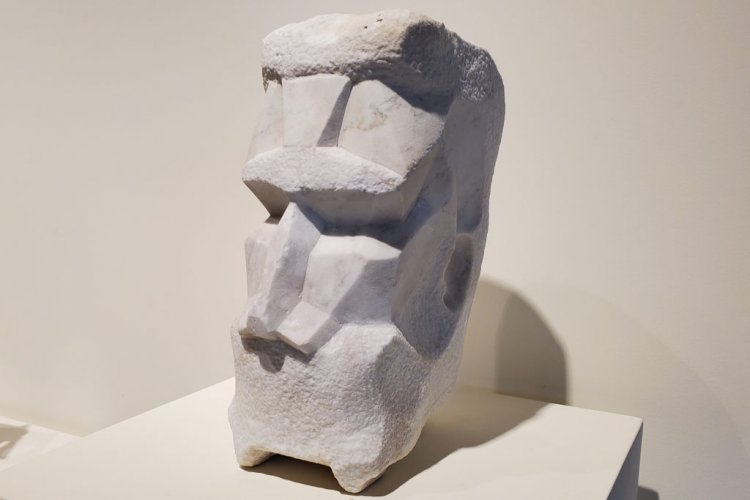Originally from Woodside, New York, Smith served in the United States Air Force from 1943-1945. He attended the American Art School and then Pratt Institute in New York on the GI Bill where he graduated in 1948 as an industrial design major. He accepted a position at the University of Washington that same year where he taught design and drawing. His sculpture “And They Called Her Woman” won the purchase prize in the Northwest Annual entering the museum’s permanent collection. This was the first of three sculptures that SAM would acquire.
The following year, Smith’s work was accepted at the San Francisco Museum of Art followed by a solo exhibition at The Little Gallery, Frederick & Nelson, Seattle in 1950. His earliest works concentrated on biomorphic abstractions of the human form.
In 1952 he earned his BFA in sculpture at UW and the following year was recognized as one of Time Magazine’s “Newsmakers of Tomorrow.” For the next two years, his work was exhibited in San Francisco at the California Palace of the Legion of Honor.
During a leave of absence, he earned his MFA at Cranbrook Academy in Michigan in 1956 and returned to UW as Assistant Professor of Art. Through the remaining decade he exhibited his work consistently in regional shows and won several awards. In 1958 he was honored with a four person exhibition at SAM with John Erickson, Alden Mason and Spencer Moseley.
His commissioned work included low relief cast cement panels for the Seattle Center’s overpass and parking garage and a large wall relief in metal and glass for the SeaFirst Bank in Eastgate.
In 1963, Smith was awarded a Ford Foundation grant to study traditional Japanese sculpture techniques. He and his family remained in Japan for a year where he also acted as a design consultant for Honda as they designed their first car for the western market. Throughout his career he was active as both artist and industrial designer, designing numerous functional items including food service display equipment, motorcycle “bagger” cases and many pieces of pendant jewelry that he often wore himself.
In the later 1960s and early 1970s his style had evolved away from organic and biomorphic forms to a more condensed set of geometric shapes. The flattened and folded circles and rectangles combined to create interlocking three dimensional sculptures and fountains. He began working with industrial metals and painted steel and produced numerous commission-based sculpture.
Notable design commissions include Temple De Hirsch Sinai and the Large sculpture for the Kennedy Memorial Library at Eastern Washington University. One of his most prominent public works is “Park Sculpture” at Seattle Central Community College. In the last decade of his life he created wood carvings, many based on Northwest Native designs.
Ticket Prices:
Adults: $10
Seniors: $7
Youth (0-18): Free
Students: Free

